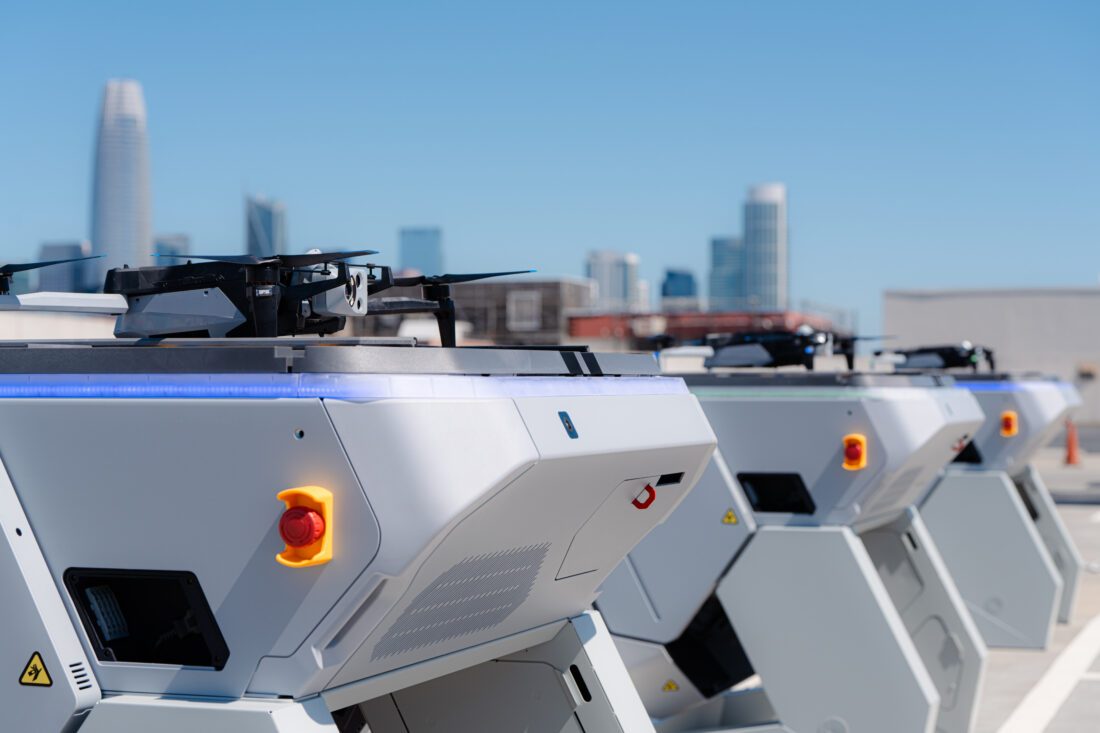New System Offers Autonomous Drone Deployment for Critical Operations
Skydio has announced the release of Dock for X10, a new system designed to make autonomous drone operations more accessible and scalable. This technology builds on the company’s long-standing commitment to autonomy, enabling drones to operate without the constant attention of a skilled pilot. According to the company, “Drones can be the ultimate data capture tool, but not without autonomy. Requiring the constant attention of a skilled operator is an inherent barrier to scale. That’s why Skydio bet big on autonomy from day one.”
Skydio’s approach to drone operation has always been centered on embedding pilot skills directly into the drone’s system. The result is a drone capable of flying independently, avoiding obstacles, and capturing data without the need for an experienced operator. This means that even with minimal training, users can leverage the power of Skydio drones.
Scaling Autonomous Drone Operations
Despite advances in autonomy, a key limitation in drone operations has been the need for one operator per drone. With the introduction of Dock for X10, this barrier is addressed. Dock allows for the pre-positioning of drones in strategic locations, ready for deployment without human intervention. The company explains, “Unshackling the drone from the operator means the drone can capture data on its own. An operator can command tens or even hundreds of drones, making them available anytime, anywhere they are needed, achieving true scale.”
The Dock system is designed for a wide range of applications across industries. Drones stationed at public safety agencies can provide instant visual data during emergencies. At electrical substations, they can conduct regular inspections and respond quickly to damage from natural disasters. Similarly, drones at construction sites can monitor progress and quality daily, while drones at large event venues can deliver real-time safety updates.
Reliability and Precision for Autonomous Flight
Dock for X10 is the result of extensive engineering, with insights gained from 400 deployments of earlier Dock models. The system ensures reliable, autonomous operation, even in harsh conditions. “Reliability is paramount,” the company states. The system is built to withstand severe weather, including winds up to 160 mph, and operates in temperatures ranging from -4°F to 122°F. Additionally, it functions in moderate rain and wind speeds up to 28 mph.
The Dock’s visual navigation system works with the drone’s AI and autonomy features to guarantee precise landings. The drone recognizes the Dock’s landing surface and orients itself for an accurate landing. After landing, the Dock closes to protect and recharge the drone, ensuring it’s ready for its next mission.
Enabling Beyond Visual Line of Sight (BVLOS) Operations
Skydio’s Dock for X10 is built with beyond visual line of sight (BVLOS) operations in mind. Equipped with weather sensors, an ADS-B In receiver, and inputs for radar systems, the system provides remote pilots with accurate data on airspace and ground conditions. The Dock’s pre-flight check cameras enable remote vehicle inspections, further enhancing safety for BVLOS operations.
The company has also partnered with Qualcomm to incorporate advanced image processing capabilities into the system. “We partnered with Qualcomm to embed a state-of-the-art SoC which enables great image quality for the cameras and advanced AI compute,” the press release explains. This technology allows the drone to perform deep learning tasks directly, maximizing efficiency.
Remote Operations and Data Management
Skydio has also introduced Remote Ops, a software platform that allows operators to manage and fly drones from anywhere via a web browser. Drones can be launched in 20 seconds, and live video streams are easily shareable through secure URLs, making it simple for stakeholders to access real-time footage.
For those needing routine data capture, the system includes advanced scheduling and mission planning features. Operators can create GPS-based flight paths or use Skydio’s Visual Positioning System to capture data indoors or outdoors. Once regulatory approval is obtained, users can run missions on a recurring schedule, allowing for continuous data collection without manual oversight.
Remote Ops also simplifies program management, helping users track the operational status of drones and Docks, and schedule maintenance when needed. For public safety agencies, DFR Command software is available to manage Drone as First Responder programs.
Flexible Connectivity for Uninterrupted Operations
Connectivity is a crucial component of drone operations, and Skydio has introduced several options to ensure reliable communication between drones and operators. Skydio Connect Access Points are external radio modules that can be installed at ideal vantage points to extend the range of drone operations. These Access Points can be connected to a Dock or deployed independently with a direct internet connection.
For missions requiring extended range, the company offers Skydio Connect 5G, which leverages the cellular network to extend connectivity beyond line of sight. “When you need to fly around a building, over a hill, and behind an obstacle—or simply need to go out a further distance, add Connect 5G to increase your range,” the release states.
Additionally, Skydio Connect Fusion seamlessly switches between point-to-point connectivity and cellular networks, ensuring uninterrupted data capture during missions. The Dock for X10 also supports various backhaul options, including Ethernet, dedicated 5G, and Starlink, making it suitable for remote installations.
Skydio’s new dock opens up new possibilities for autonomous drone deployment.
As the company notes, “The future of useful, autonomous flying robots operating in unconstrained environments is here and ready to empower those working to keep our communities safe, our critical infrastructure running, and our freedoms protected.”
Read more:
Miriam McNabb is the Editor-in-Chief of DRONELIFE and CEO of JobForDrones, a professional drone services marketplace, and a fascinated observer of the emerging drone industry and the regulatory environment for drones. Miriam has penned over 3,000 articles focused on the commercial drone space and is an international speaker and recognized figure in the industry. Miriam has a degree from the University of Chicago and over 20 years of experience in high tech sales and marketing for new technologies.For drone industry consulting or writing, Email Miriam.
TWITTER:@spaldingbarker
Subscribe to DroneLife here.

